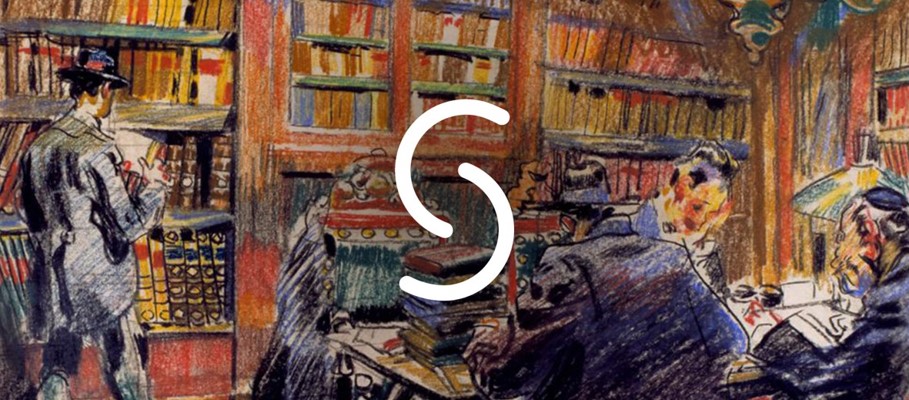Urbinati latini
Item
-
Country
-
IT
-
Name of institution (English)
-
Vatican Apostolic Library
-
Language of name of institution
-
ita
-
Contact information: postal address
-
Cortile del Belvedere V, 00120 Vatican City
-
Contact information: phone number
-
0039 0669879411
-
Reference number
-
Urb. lat.
-
Type of reference number
-
Archival reference number
-
Title (English)
-
Latin Urbinati
-
Title (official language of the state)
-
Urbinati latini
-
Language of title
-
lat
-
Creator / accumulator
-
Duchy of Urbino
-
Date note
-
15th century/18th century
-
Language(s)
-
ita
-
lat
-
Extent
-
1,779 manuscripts
-
Type of material
-
Textual Material
-
Graphic Material
-
Physical condition
-
Good
-
Scope and content
-
The Latin collection of the Library of the Dukes of Urbino is divided into two main groups: the original collection, gathered between 1465 and 1480 by the first duke, Federico da Montefeltro (1422-82); and the collection relating to the years of the last duke, Francesco Maria II Della Rovere (1549-1631). The first group is an example of a noble collection of the 15th century, according to the style and tastes of Humanism and the Renaissance. The second group is an ordered archive of political life between the 16th and 17th centuries, in which, although Latin remains the predominant language, the Italian manuscripts also constitute an important part of the collection.
The Urbinati latini includes two copies (Urb.lat. 836 and Urb.lat. 818) of Salomon Usque's "Relatione delle cose occorse in Constantinopoli nella morte del III Sultan Murat et nell'intrata del III Sultan Mehemet suo figliuolo", an account of death of Sultan Murad III and succession of his son Mehemet III addressed to Sir Edward Barton, the English ambassador in Constantinople. The report is dated February 2, 1595. The collection also includes documents related to the Roman Inquisition's trial of João Lopez, alias Samuel Abudenti, and other Portuguese conversos in 1582 and 1583 (Urb. lat. 1051, 1059 II, 1060 II). These documents were published by Aron di Leone Leoni (1991).
-
Archival history
-
The Urbinati fonds came from the Library of the Dukes of Urbino. The main nucleus started being collected by Federico da Montefeltro (1422-82). In 1487, from an inventory drawn up after the duke’s death, the collection already counted 900 manuscripts, mostly in Latin, but also including 168 Greek, 82 Hebrew, and two Arabic codices. With Duke Francesco Maria I Della Rovere (1508-38), the library of Giovanni Sforza (1466-1510) also became part of the Urbinati collection. In 1631, Francesco Maria II died without heirs, and the duchy was annexed to the territories of the Church by Pope Urban VIII (papacy: 1623-44), who also started the transfer of archival and book materials. The manuscripts of the ducal library were initially to be transferred to the community of Urbino. However, due to pressure exerted by the Vatican Secretariat of State and through the Pesaro-Urbino legate, the library was offered to Pope Alexander VII (papacy: 1655-67) in 1657, in exchange for 100 scudi and the granting of some concessions.
In the Vatican Library, the manuscript collection was divided into three distinct collections: Latini, Greci, and Ebraici. Six Arab manuscripts were included in the Vaticani Arabi collection. Over time, other manuscript collections were added to the Latin fonds, mostly deriving from writers, professors, and artists.
-
(source: D’Aiuto, Francesco, and Paolo Vian. 2011. Guida ai fondi manoscritti, numismatici, a stampa della Biblioteca vaticana. Studi e testi 466–467. Città del Vaticano: Biblioteca Apostolica Vaticana)
-
Administrative / Biographical history
-
The Duchy of Urbino was a state entity of the Italian peninsula. A city of "ghibelline" tradition, Urbino became the seat of an imperial vicariate in 1155. In 1213, it was entrusted to Buonconte da Montefeltro (1170-1241) by Emperor Frederick II (1194-1250). In 1443, the county was elevated to duchy by Pope Eugene IV (papacy: 1431-47), and Oddantonio da Montefeltro (1428-44) became the first duke. His successor was Federico (1444-82), a brave soldier and a brilliant politician, under whose rule the duchy extended from Gubbio to the Adriatic and from the Apennines to San Marino, a territory now included between Umbria, Marche, and Emilia Romagna. Under the patronage of Duke Federico, the ducal city became one of the main centres of Italian Humanism and the Renaissance. It was in these years that the important book heritage of Urbino grew and became known for its precious manuscripts and incunabula. The Montefeltro family dominated the duchy until 1508 when Guidobaldo (1472-1508) died without heirs. The duchy then passed to the Della Rovere family, through Francesco Maria I (1491-1538). Between 1516 and 1521, Urbino had a short period of domination by Lorenzo de’ Medici (1492–1519), nephew of Pope Leo X (papacy: 1513-21). After the return of Urbino to the Della Rovere family, whose dynasty died out without heirs in 1631, it became a territory of the Papal State.
-
(source: Simonetta, Marcello. 2007. Federico da Montefeltro and his Library. 1st ed. Milano; [Città del Vaticano]: Y.Press; Biblioteca Apostolica Vaticana)
-
Author of the description
-
Carla Vieira and Andrea Cicerchia, 2022
